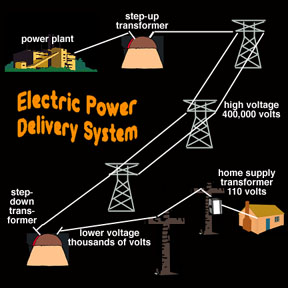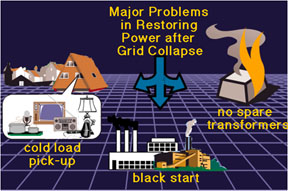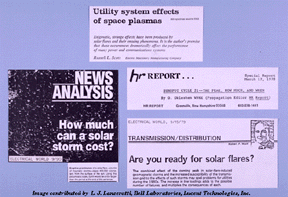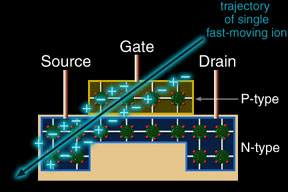Click on image for full size
Electric Power Delivery System
When you switch on a light in your house, you are using the electrical power system. A power plant generates the electricity. Electrical power travels along wires to your house. The light switch channels the electricity to the light bulb.
We use AC (alternating current) electricity in our homes and businesses. The electrons don't actually flow along the wires. Instead, they vibrate back and forth very quickly (60 times each second!). When you plug in an appliance, the outlet supplies power to move electrons that are already in the wiring of the appliance.
Voltage is one measure of electricity. If you think of an electrical circuit as being like water in pipes, voltage is like the pressure of the water. Sometimes we use a different voltage electricity for a special purpose. High voltages are good to use when electricity will travel a long distance. Less energy is lost during the trip if we use high voltages. Lower voltages are better to use in our homes. Lower voltage electricity is safer.
When electricity leaves a power plant, we use a device called a transformer to increase or "step up" the voltage. The high voltage electricity (more than 100,000 volts!) is then ready for the long trip over power lines to your neighborhood. Near your house, more transformers are used to change the voltage again. This time the transformers decrease or "step down" the voltage to a safer level. We use 110 volt electricity in our homes.
Space weather can mess up the electrical power system by damaging transformers. Space weather storms can cause direct current (DC) electricity to flow in wires. Transformers are made to work with AC power. DC power causes transformers to overheat or even catch on fire.














